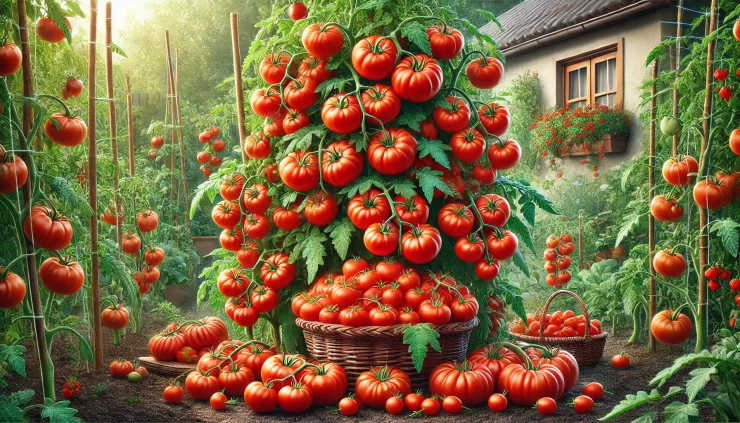Growing tomatoes can be one of the most rewarding gardening experiences, providing you with fresh, juicy fruits to enjoy all summer long. With a few expert tips and some natural fertilizers like aspirin and baking soda, you can ensure a bountiful harvest. Here’s your ultimate guide to planting tomatoes and maximizing your yield.
Step 1: Choose the Right Tomato Varieties
Before planting, decide which tomato varieties suit your needs and climate. There are two main types:
Determinate (Bush) Tomatoes: These grow to a certain height and set all their fruit within a short period. They are ideal for container gardening and small spaces.
Indeterminate (Vine) Tomatoes: These continue to grow and produce fruit throughout the season, making them perfect for gardeners who want a steady supply of tomatoes.
Step 2: Prepare the Soil
Tomatoes thrive in well-drained, fertile soil rich in organic matter. Here’s how to prepare your soil:
Soil Test: Conduct a soil test to determine its pH and nutrient content. Tomatoes prefer a pH between 6.0 and 6.8.
Amend the Soil: Add compost or well-rotted manure to improve soil fertility. Work it into the top 6-8 inches of soil.
Step 3: Planting Tomatoes
- Starting Seeds Indoors
Timing: Start seeds indoors 6-8 weeks before the last expected frost date.
Seedlings: Transplant seedlings outdoors when they are 6-8 inches tall and after all danger of frost has passed. - Transplanting Seedlings
Spacing: Plant tomatoes 18-24 inches apart for determinate varieties and 24-36 inches apart for indeterminate varieties.
Depth: Plant seedlings deep, burying two-thirds of the stem. This encourages a stronger root system.
Step 4: Natural Fertilizers for Healthy Growth
Using natural fertilizers can boost tomato growth and improve yield. Here are some effective options: - Aspirin
Benefits: Aspirin helps boost the plant’s immune system, making it more resistant to diseases.
Application: Dissolve one aspirin tablet in a gallon of water and water your tomato plants with this solution every 2-4 weeks. - Baking Soda
Benefits: Baking soda helps prevent fungal diseases like powdery mildew.
Application: Mix 1 tablespoon of baking soda with 1 gallon of water and a few drops of liquid soap. Spray this solution on the plants’ leaves every 1-2 weeks. - Epsom Salt
Benefits: Epsom salt provides magnesium, which is essential for photosynthesis and fruit development.
Application: Dissolve 1 tablespoon of Epsom salt in a gallon of water and apply it to the soil around the plants every 4-6 weeks. - Compost Tea
Benefits: Compost tea is rich in nutrients and beneficial microbes.
Application: Brew compost tea by steeping compost in water for 24-48 hours. Water your tomato plants with this tea every 2-3 weeks.
Step 5: Care and Maintenance - Watering
Consistency: Water tomatoes consistently to prevent blossom end rot and splitting. Aim for 1-2 inches of water per week.
Method: Water at the base of the plants to keep leaves dry and reduce the risk of disease. - Mulching
Benefits: Mulch helps retain soil moisture, suppress weeds, and prevent soil-borne diseases.
Application: Apply a 2-3 inch layer of organic mulch, such as straw or wood chips, around the base of the plants. - Pruning and Staking
Pruning: Remove the suckers (small shoots growing in the leaf axils) to encourage larger fruit production.
Staking: Use stakes, cages, or trellises to support the plants and keep fruit off the ground.
Step 6: Pest and Disease Management
Natural Remedies: Use neem oil, insecticidal soap, or diatomaceous earth to manage pests.
Disease Prevention: Rotate crops each year, provide good air circulation, and avoid overhead watering to reduce the risk of diseases.
Step 7: Harvesting
Timing: Harvest tomatoes when they are fully colored and slightly soft to the touch.
Method: Gently twist and pull the tomatoes from the vine or use pruning shears to avoid damaging the plant.
By following these expert tips and using natural fertilizers like aspirin, baking soda, and others, you can grow healthy, productive tomato plants. With proper care and attention, you’ll enjoy a bountiful harvest of delicious tomatoes all season long. Happy gardening!






Add comment